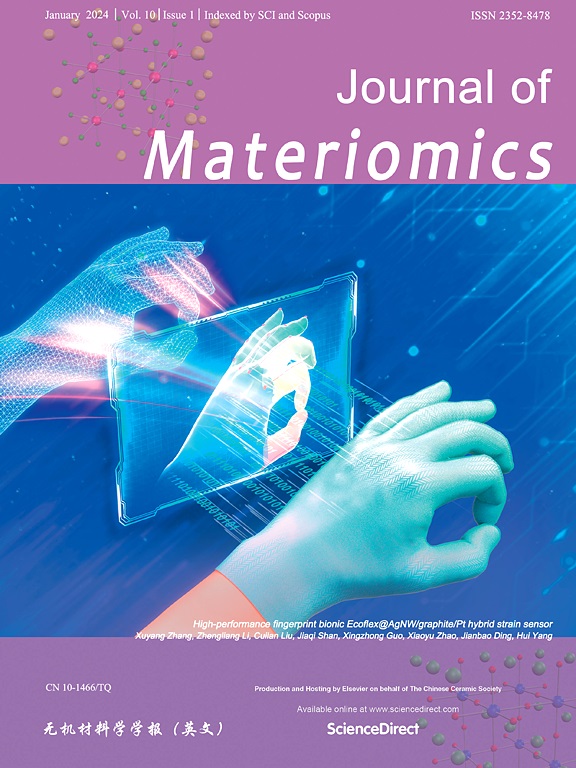Compositional design of compounds with elements not in training data using supervised learning
IF 8.4
1区 材料科学
Q1 CHEMISTRY, PHYSICAL
引用次数: 0
Abstract
An issue of current interest in the use of machine learning models to predict compositions of materials is their reliability in predicting outcomes with elements not included in the training data. We show that the phase diagram of the ceramic (Ba1−x−yCaxSry)(Ti1−u−v−wZruSnvHfw)O3 can be accurately predicted if the feature values of unknown elements do not exceed the range of values for existing elements in the training data. In particular, we employ physical features as descriptors and compositions as weights to show that by excluding an element, such as Zr, Sn or Hf from the training set and treating it as an unknown element, the machine learning model accurately predicts the property only if the feature values of the unknown element does not exceed the range of values of existing elements in the training set. By adding a small amount of data for the unknown element restores the prediction accuracy. We demonstrate this for BaTiO3 ceramics doped with rare earth elements where the prediction accuracy is restored if the physical feature space is suitably enlarged with training data. The prediction error increases with the Euclidean distance of the testing sample relative to the nearest training sample in the physical feature space. Our work provides an effective strategy for extending machine learning models for material compositions beyond the scope of available data.

利用监督学习对含有非训练数据元素的化合物进行成分设计
本文章由计算机程序翻译,如有差异,请以英文原文为准。
求助全文
约1分钟内获得全文
求助全文
来源期刊

Journal of Materiomics
Materials Science-Metals and Alloys
CiteScore
14.30
自引率
6.40%
发文量
331
审稿时长
37 days
期刊介绍:
The Journal of Materiomics is a peer-reviewed open-access journal that aims to serve as a forum for the continuous dissemination of research within the field of materials science. It particularly emphasizes systematic studies on the relationships between composition, processing, structure, property, and performance of advanced materials. The journal is supported by the Chinese Ceramic Society and is indexed in SCIE and Scopus. It is commonly referred to as J Materiomics.
 求助内容:
求助内容: 应助结果提醒方式:
应助结果提醒方式:


